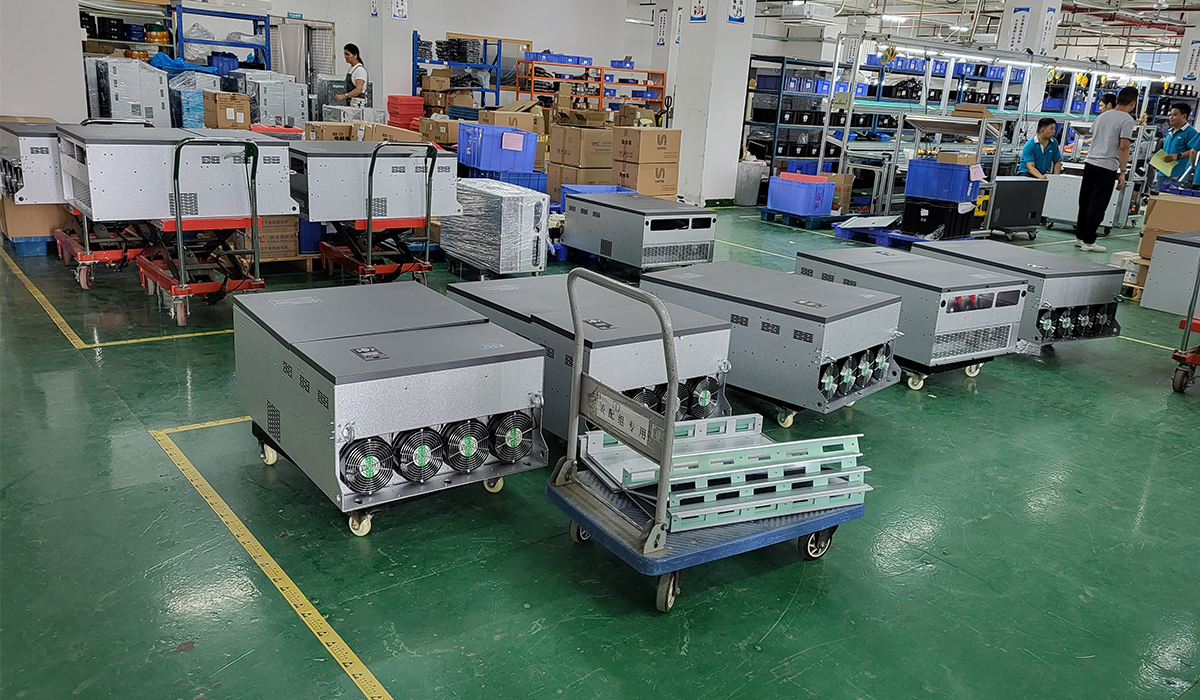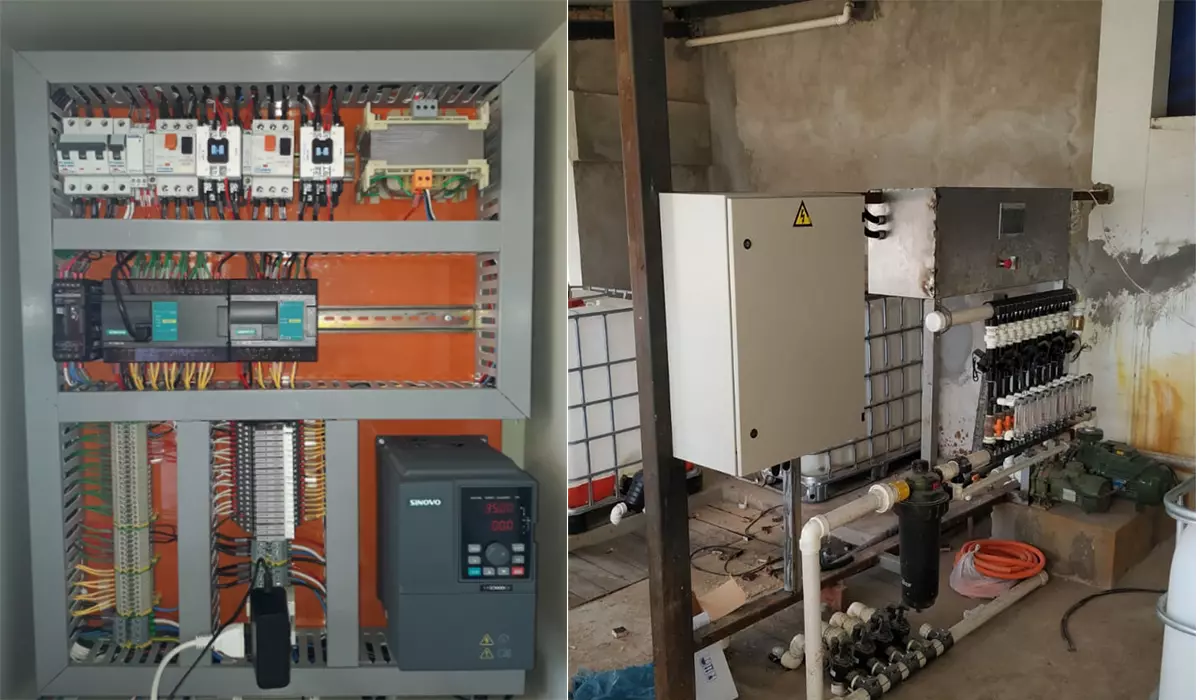Testing the insulation resistance of a Variable Frequency Drive (VFD) is a crucial maintenance task to ensure its reliability and longevity. This process helps in identifying potential insulation failures, which can lead to malfunctions or complete breakdowns.
Importance of Insulation Resistance Testing
Insulation resistance testing is vital for several reasons:
Safety: Ensuring that the insulation is intact helps prevent electrical shocks and fire hazards.
Performance: Proper insulation ensures that the VFD operates efficiently without electrical losses.
Longevity: Regular testing can help identify potential issues early, preventing costly repairs or replacements.
Equipment Needed
To perform an insulation resistance test on a VFD, you will need the following equipment:
Insulation Resistance Tester (Megohmmeter): A device used to measure the resistance of the insulation.
Personal Protective Equipment (PPE): Safety gear such as gloves, goggles, and insulating mats.
Multimeter: For preliminary checks and ensuring the VFD is de-energized.
Disconnect Switch: To isolate the VFD from the power supply.
Preparation Steps
1. Safety First
Before starting the test, ensure that you follow all safety protocols:
- Wear appropriate PPE.
- Ensure that the testing area is dry and clean.
- Notify all personnel in the vicinity about the testing process.
2. De-Energize the VFD
Turn off the power supply to the VFD and use a multimeter to confirm that there is no voltage present in the system. This is crucial to avoid electric shocks and damage to the testing equipment.
3. Disconnect the VFD
Disconnect the VFD from the motor and power supply. This isolation ensures that the test results reflect the insulation resistance of the VFD alone, without interference from other components.

Testing Procedure
1. Connect the Insulation Tester
Attach the insulation tester’s leads to the VFD’s terminals. Typically, you will connect one lead to the VFD’s chassis ground and the other lead to the output terminals (U, V, W).
2. Select the Test Voltage
Set the insulation tester to the appropriate test voltage. The recommended voltage for testing VFDs usually ranges from 500V to 1000V, but it is important to refer to the manufacturer’s guidelines.
3. Perform the Test
Initiate the test by pressing the start button on the insulation tester. The device will apply the selected voltage and measure the resistance of the insulation.
Initial Reading: Note the initial reading immediately after applying the voltage.
Stable Reading: Continue the test for a duration of 1 to 10 minutes to observe the resistance stability. A steady or increasing resistance value is a good sign, whereas a decreasing value indicates deteriorating insulation.
Interpreting the Results
The insulation resistance is typically measured in megohms (MΩ). Here are some general guidelines for interpreting the results:
Good Insulation: A reading above 100 MΩ usually indicates good insulation.
Marginal Insulation: A reading between 10 MΩ and 100 MΩ suggests that the insulation is aging or contaminated but still functional.
Poor Insulation: A reading below 10 MΩ indicates significant insulation breakdown, and immediate action is required.
Post-Test Procedures
1. Discharge the VFD
After completing the test, safely discharge any stored electrical energy in the VFD by connecting a grounding rod to the terminals for a few moments.
2. Reconnect and Power Up
Reconnect the VFD to the motor and power supply. Turn on the power and observe the VFD for any unusual behavior during startup.
3. Document the Results
Keep a detailed record of the test results, including the date, test voltage, and resistance values. This documentation is useful for tracking the condition of the VFD over time and planning maintenance activities.
Regular insulation resistance testing is an essential maintenance practice for ensuring the reliability and safety of Variable Frequency Drives. By following the proper testing procedures and safety protocols, you can effectively monitor the condition of the insulation, identify potential issues early, and take appropriate actions to maintain the performance and longevity of the VFD. Understanding the importance of insulation resistance and how to measure it correctly is key to preventing unexpected downtimes and ensuring the efficient operation of industrial motor control systems.
PDF: How to Test the Insulation Resistance of a Variable Frequency Drive
Testing the insulation resistance of a Variable Frequency Drive (VFD) is a crucial maintenance task to ensure its reliability and longevity. This process helps in identifying potential insulation failures, which can lead to malfunctions or complete breakdowns.
Importance of Insulation Resistance Testing
Insulation resistance testing is vital for several reasons:
Safety: Ensuring that the insulation is intact helps prevent electrical shocks and fire hazards.
Performance: Proper insulation ensures that the VFD operates efficiently without electrical losses.
Longevity: Regular testing can help identify potential issues early, preventing costly repairs or replacements.
Equipment Needed
To perform an insulation resistance test on a VFD, you will need the following equipment:
Insulation Resistance Tester (Megohmmeter): A device used to measure the resistance of the insulation.
Personal Protective Equipment (PPE): Safety gear such as gloves, goggles, and insulating mats.
Multimeter: For preliminary checks and ensuring the VFD is de-energized.
Disconnect Switch: To isolate the VFD from the power supply.
Preparation Steps
1. Safety First
Before starting the test, ensure that you follow all safety protocols:
- Wear appropriate PPE.
- Ensure that the testing area is dry and clean.
- Notify all personnel in the vicinity about the testing process.
2. De-Energize the VFD
Turn off the power supply to the VFD and use a multimeter to confirm that there is no voltage present in the system. This is crucial to avoid electric shocks and damage to the testing equipment.
3. Disconnect the VFD
Disconnect the VFD from the motor and power supply. This isolation ensures that the test results reflect the insulation resistance of the VFD alone, without interference from other components.

Testing Procedure
1. Connect the Insulation Tester
Attach the insulation tester’s leads to the VFD’s terminals. Typically, you will connect one lead to the VFD’s chassis ground and the other lead to the output terminals (U, V, W).
2. Select the Test Voltage
Set the insulation tester to the appropriate test voltage. The recommended voltage for testing VFDs usually ranges from 500V to 1000V, but it is important to refer to the manufacturer’s guidelines.
3. Perform the Test
Initiate the test by pressing the start button on the insulation tester. The device will apply the selected voltage and measure the resistance of the insulation.
Initial Reading: Note the initial reading immediately after applying the voltage.
Stable Reading: Continue the test for a duration of 1 to 10 minutes to observe the resistance stability. A steady or increasing resistance value is a good sign, whereas a decreasing value indicates deteriorating insulation.
Interpreting the Results
The insulation resistance is typically measured in megohms (MΩ). Here are some general guidelines for interpreting the results:
Good Insulation: A reading above 100 MΩ usually indicates good insulation.
Marginal Insulation: A reading between 10 MΩ and 100 MΩ suggests that the insulation is aging or contaminated but still functional.
Poor Insulation: A reading below 10 MΩ indicates significant insulation breakdown, and immediate action is required.
Post-Test Procedures
1. Discharge the VFD
After completing the test, safely discharge any stored electrical energy in the VFD by connecting a grounding rod to the terminals for a few moments.
2. Reconnect and Power Up
Reconnect the VFD to the motor and power supply. Turn on the power and observe the VFD for any unusual behavior during startup.
3. Document the Results
Keep a detailed record of the test results, including the date, test voltage, and resistance values. This documentation is useful for tracking the condition of the VFD over time and planning maintenance activities.
Regular insulation resistance testing is an essential maintenance practice for ensuring the reliability and safety of Variable Frequency Drives. By following the proper testing procedures and safety protocols, you can effectively monitor the condition of the insulation, identify potential issues early, and take appropriate actions to maintain the performance and longevity of the VFD. Understanding the importance of insulation resistance and how to measure it correctly is key to preventing unexpected downtimes and ensuring the efficient operation of industrial motor control systems.
PDF: How to Test the Insulation Resistance of a Variable Frequency Drive
continue reading
Related Posts
Variable Frequency Drives (VFDs) are essential in modern industrial automation and motor control systems. They provide precise control over motor […]
Variable Frequency Drives (VFDs) are critical in converting single-phase power to three-phase power, enabling the use of three-phase motors in […]
Variable Frequency Drives (VFDs) and energy savers are both technologies aimed at improving energy efficiency in various applications. However, they […]



